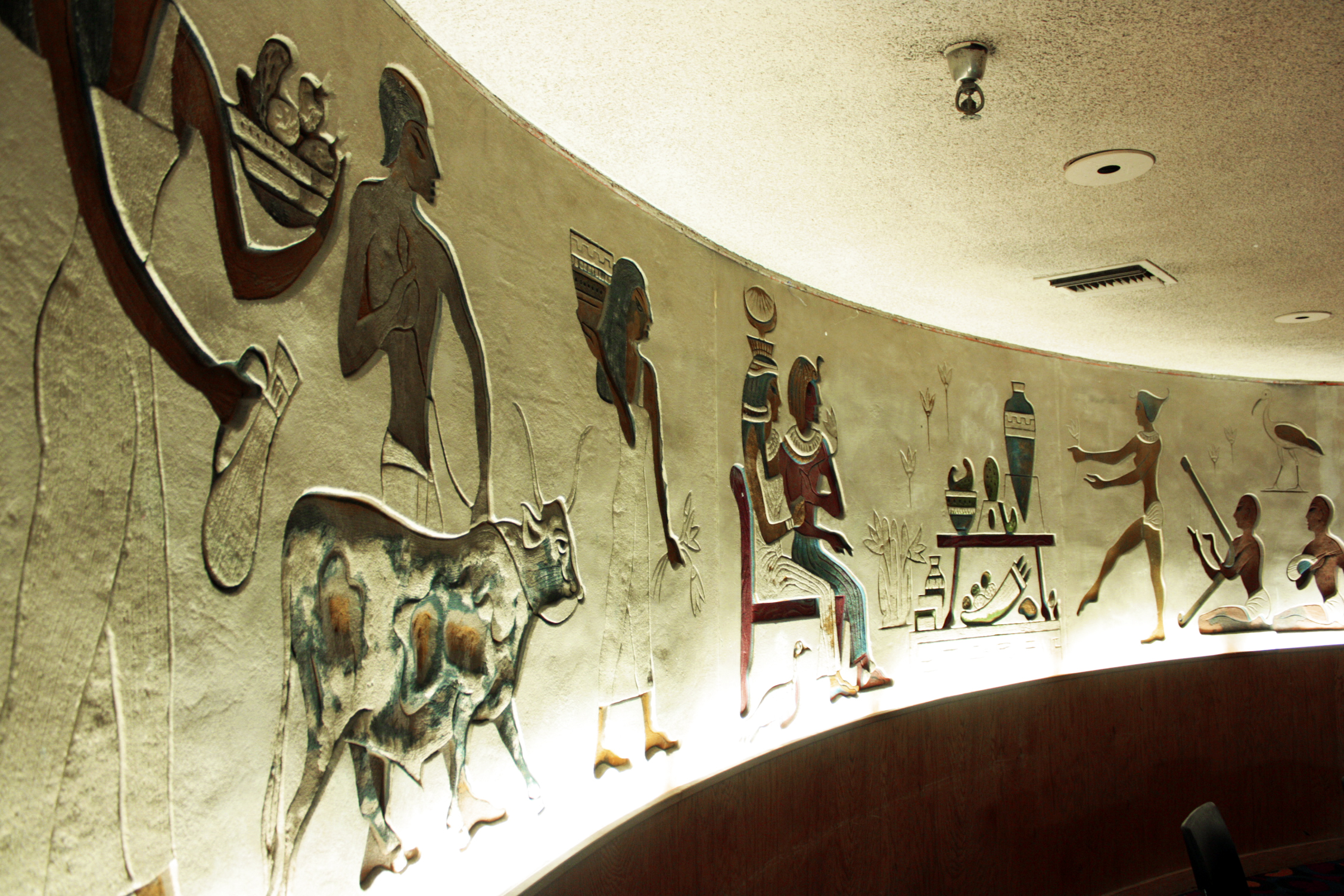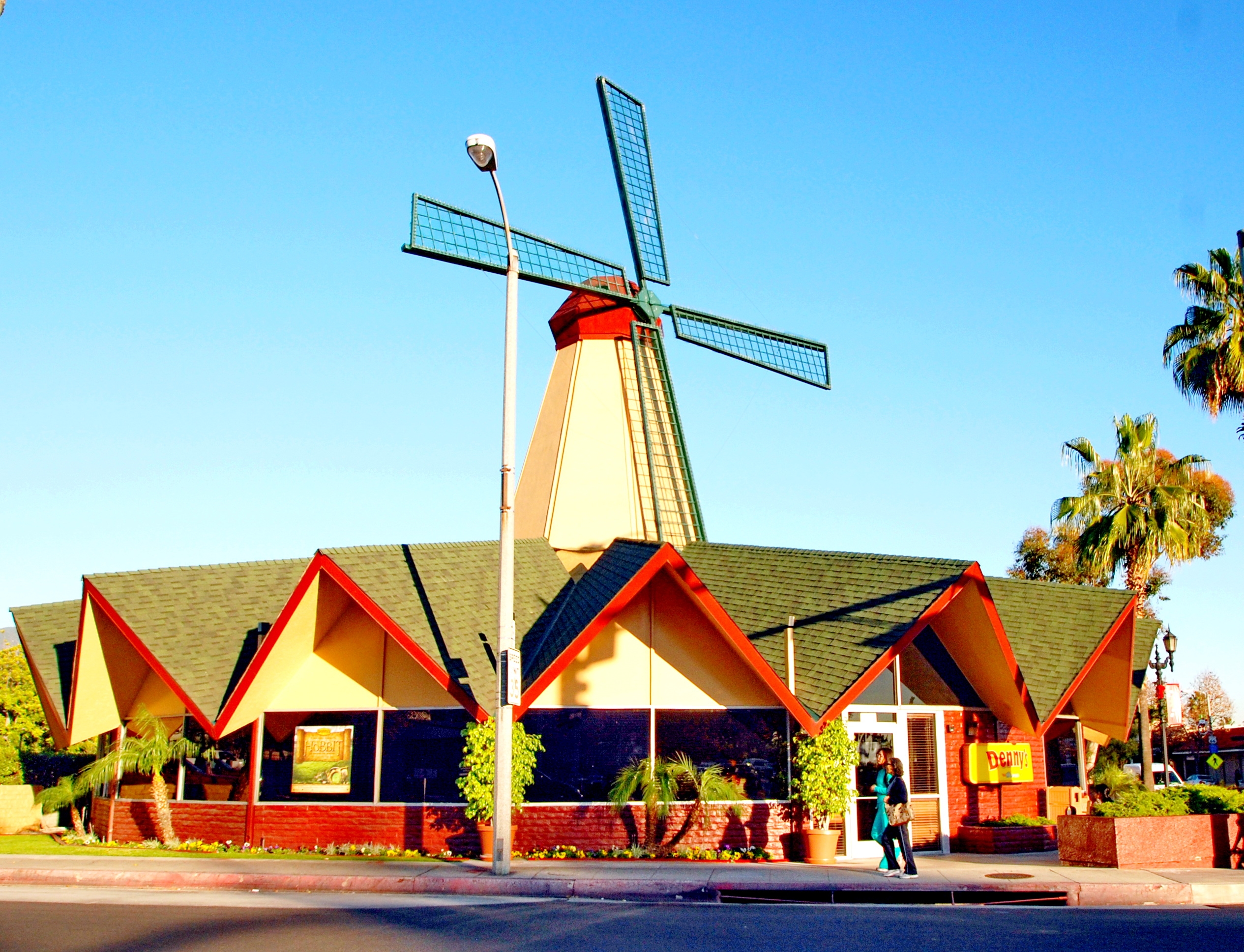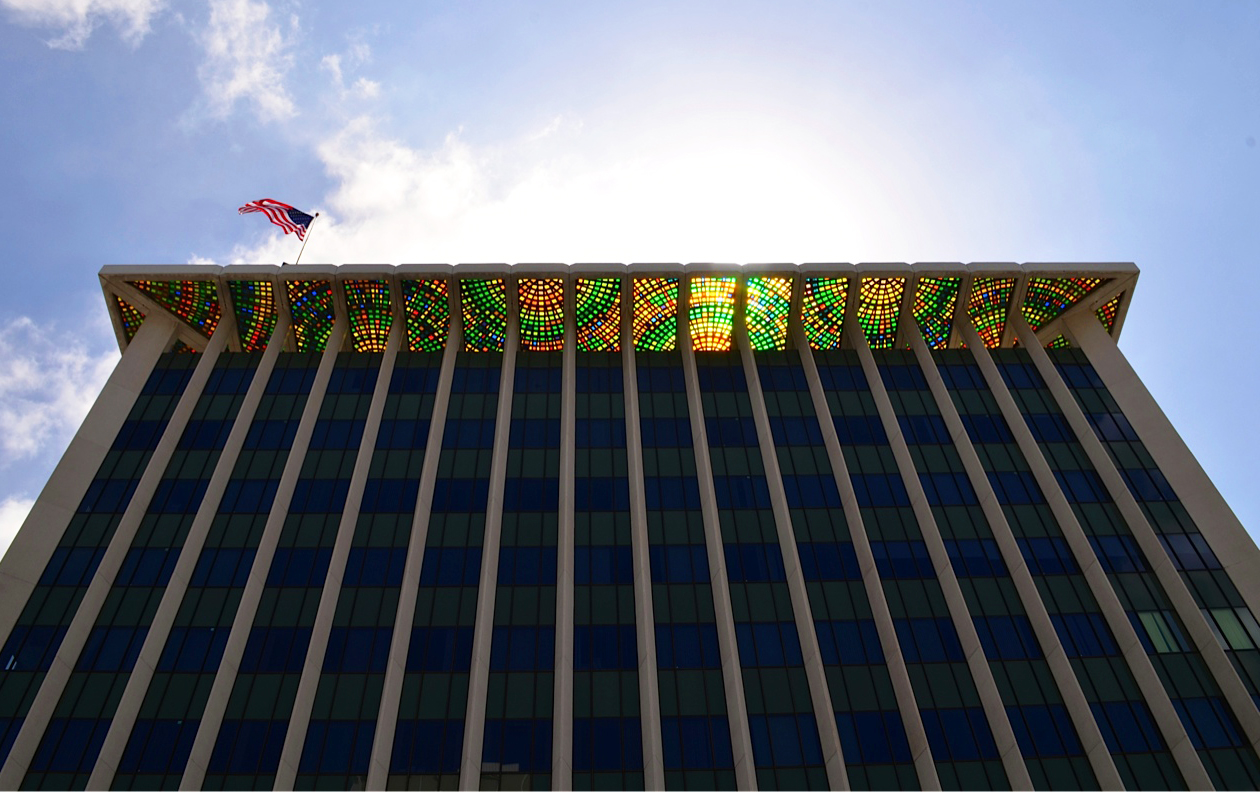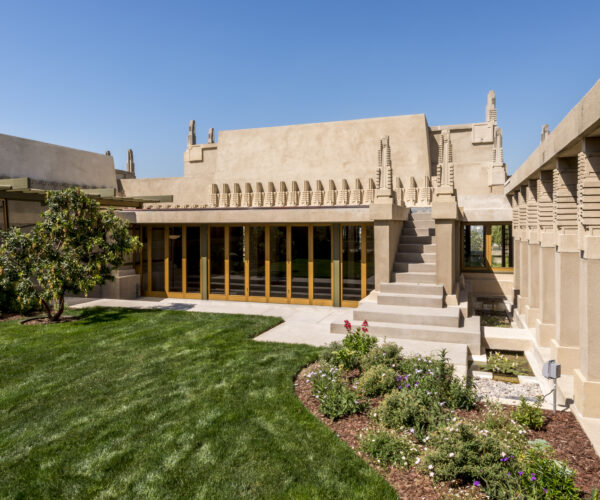
Place
Brunswick Sands Bowl
The Sands Bowl's Googie-esque, Egyptian-themed design is a great example of a bowling center in the "California style," with cocktail lounge, sunken dining room, and exotic decor.


Place Details
Address
Get directions
Architect
Decade
Property Type
Attributes
Community
Before about 1950, bowling alleys tended to be small, dark affairs with a few lanes open for serious bowlers and wandering passersby. But everything changed in 1951, when the American Machine and Foundry Company introduced the first automatic pin-setting machine. Bowling boomed all over the nation during the postwar period, with the number of lanes increasing from 50,000 to 140,000 between 1950 and 1970. The narrow, dark bowling alley of the past became the recreational bowling center, containing features like cocktail lounges, restaurants, and exotic décor to help attract housewives and kids as well as members of the local bowling league.
The Sands Bowl in Lancaster is a great example of a bowling center in the "California style" popularized by Long Beach architectural firm Powers, Daly, and DeRosa. It is unknown whether this firm designed the Sands Bowl, but if it didn't, it clearly influenced its design.
Completed in 1958, this Googie-esque bowling alley boasts an eye-catching Egyptian theme inside and out, starting with a curving exterior entryway covered in stylized "hieroglyphs."
Inside, the building had a cocktail lounge, a sunken dining room, a coffee shop, a banquet room, and a billiards room featuring a plaster mural of Egyptian figures by artist Milton Tuttle.
The Sands Bowl was doubtlessly a popular destination in postwar Lancaster, which was booming at the time thanks to Edwards Air Force Base. It remains an outstanding example of the ""California style"" bowling center, comparable to other survivors like Covina Bowl.


